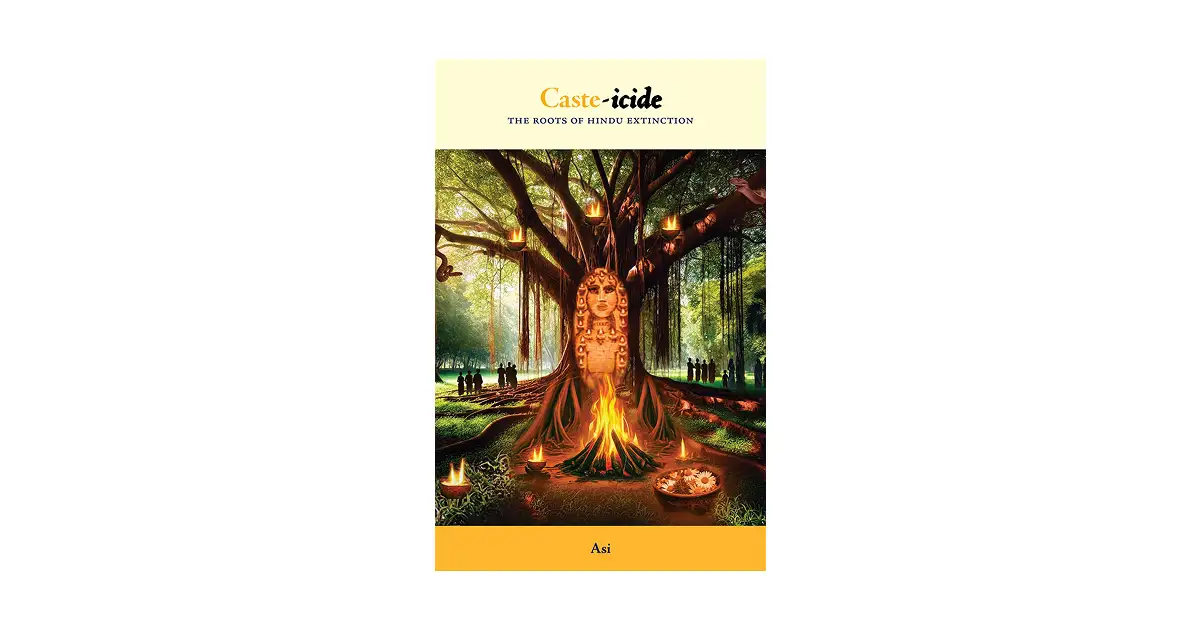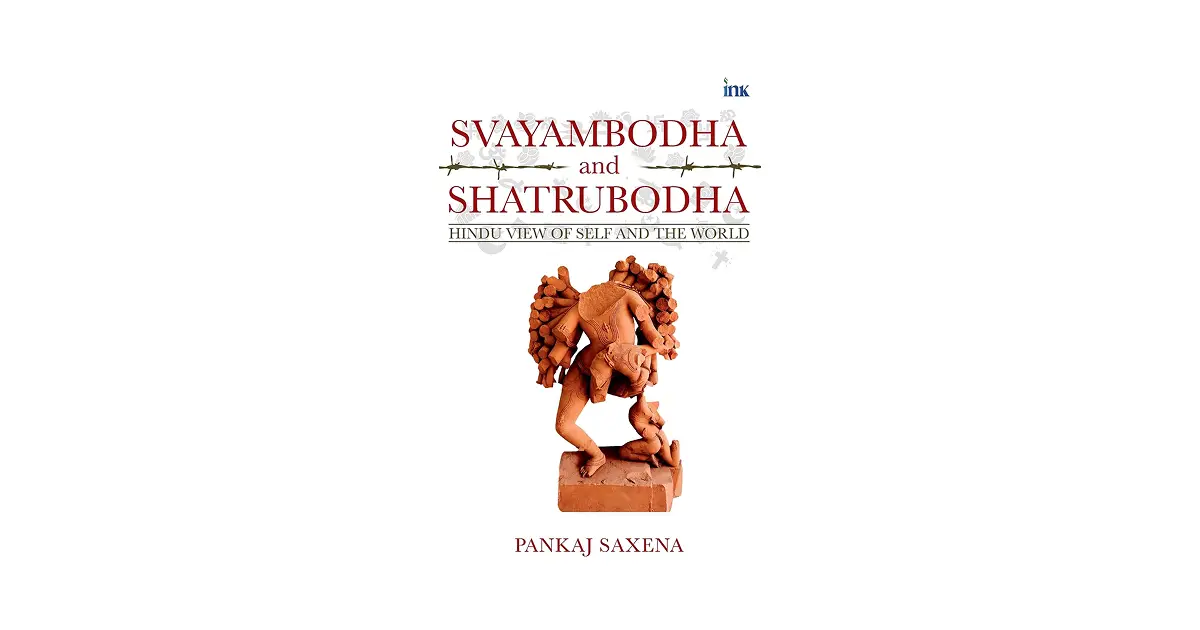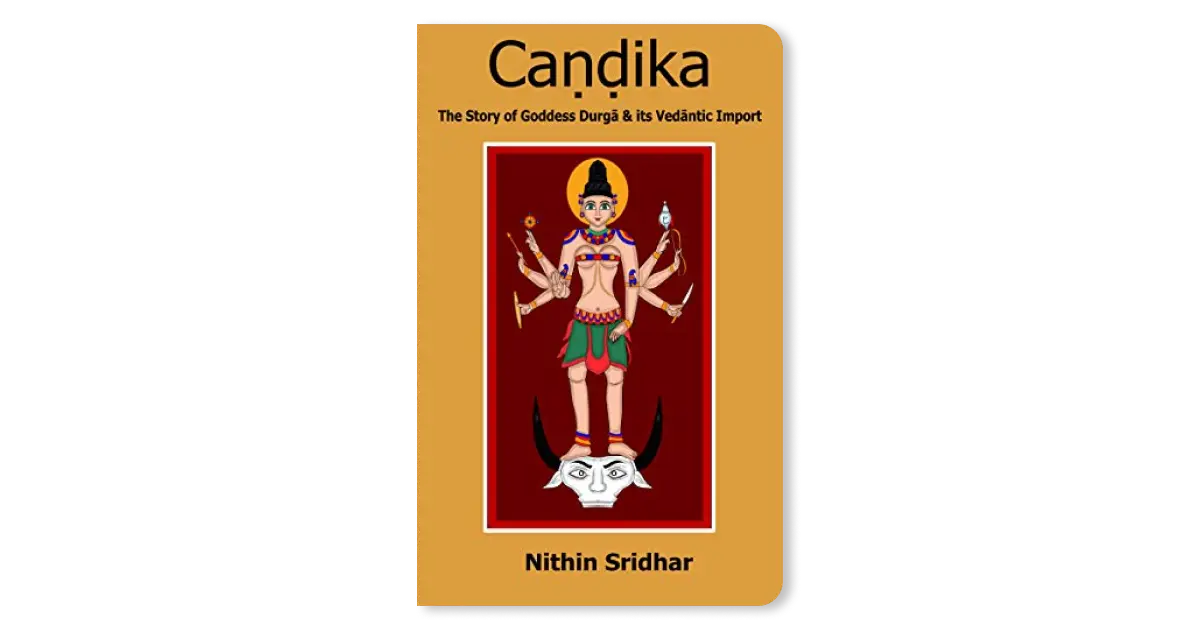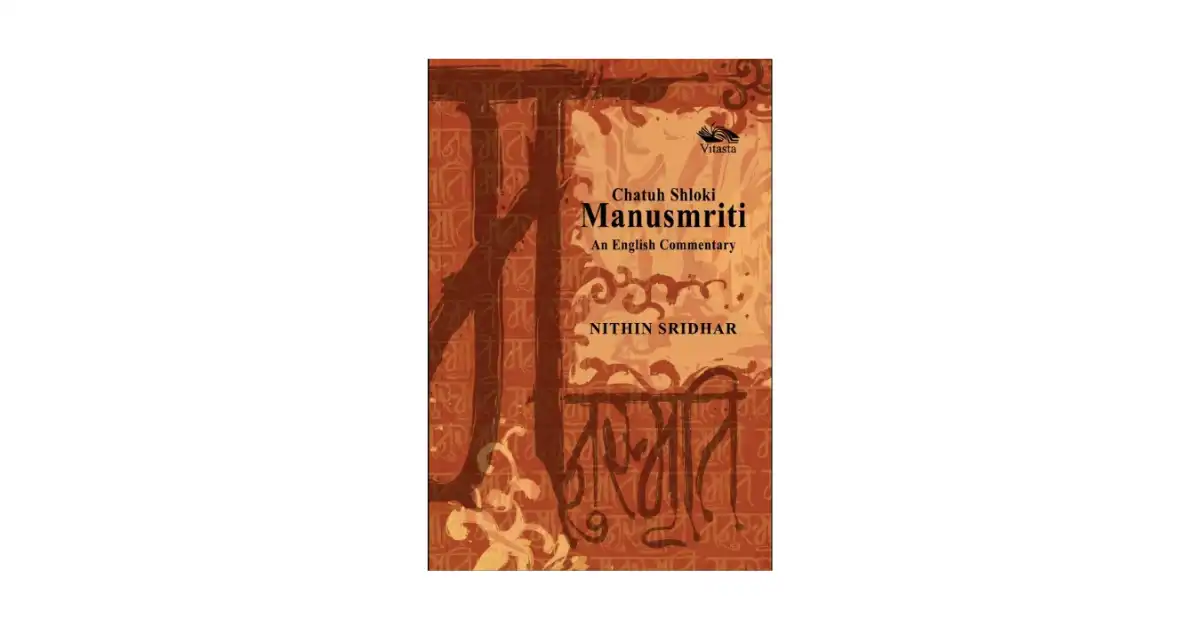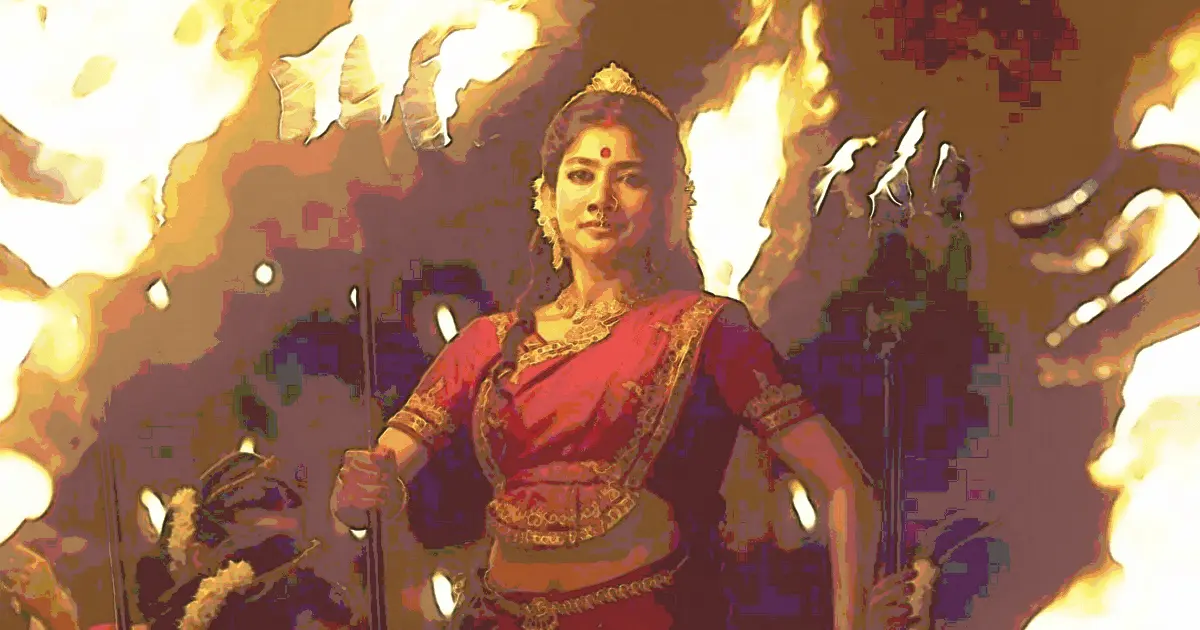तस्मात्सर्वेषु कालेषु मामनुस्मर युध्य च ।
मय्यर्पितमनोबुद्धिर्मामेवैष्यस्यसंशयम् ॥tasmāt sarveṣu kāleṣu mām anusmara yudhya ca |
mayyarpita-mano-buddhir mām evaiṣyasyasanśayam ||Therefore, always remember Me, and also do your duty of fighting the war. With mind and intellect surrendered to Me, you will definitely attain Me; of this, there is no doubt.
Bhagavad Gītā 8.7
The blurb of this book speaks a harsh truth: that the use of the phrase ‘caste system’ is so prevalent today that most of us accept it as a fact, that it is discriminatory, and that it must be eradicated. After examining primary evidence from various sources though, Mahalingam Balaji, the author of the book, ‘Caste-icide’, has an important insight to share, that none of these assumptions are supported by facts. This so-called *‘*caste system’ appears to be a product of Western imagination. Dr. B.R. Ambedkar refuted this allegation, too: that Brāhmaṇas created the ‘caste system’ and imposed it on non-Brāhmaṇas. Despite all the evidence to the contrary, and national leaders speaking up against these lies, this myth is still treated as hard reality.
The worrying part is how quickly this issue is being used globally to undermine and guilt-trip Hindus. Be it the caste discrimination case in California, or with the evolution of 'Critical Caste theory', in any interaction between two Hindus, this ‘caste system’ dynamic is being weaponized and used to their detriment.
Mahalingam Balaji, author of Caste-icide warns us on how the ‘Aryan Invasion Theory’ (AIT) began as an innocent hypothesis, too, before becoming weaponized, especially in academic circles, and -
If the weaponisation of the Caste System narrative is not challenged and addressed, it may potentially destroy the foundations of Hindu society, resulting in its extinction not only in India but also in the global diaspora.
The author of lays out the systematic manner in which this civilizational battle was conceived and is currently being fought by the Hinduphobic brigade:
- The first pillar was to portray Brāhmaṇas as Aryans, or ‘outsiders’, establishing two factions within the same society via AIT.
- The second pillar was that the Brāhmaṇas oppressed all indigenous populations, and that the indigenous communities do not adhere to Sanātana or Hindu Dharma, their practices being distinct and different.
- The third pillar was to assert that Hindu Dharma was against equality, that it promoted a discriminating caste structure, and that it was rife with abominable practices such as sati.
- The fourth pillar claimed that the ‘Upper Castes’ denied ‘Lower Castes’ opportunities such as education, and that they were mistreated etc. (These categories are British and have no scriptural sanction).
- The fifth pillar criticizes the sacred scriptures of Hindus, calling them primitive and discriminatory and misinterprets them.
- The sixth pillar seeks to establish an environmental and sustainability argument by claiming that all Hindu rituals and practices are unsustainable, not eco-friendly and do not allow for diversity. Which is where we are now, currently.
Mahalingam ji refutes each of the above preposterous presumptions and proves through rigorous research of our sacred texts, and via analysis of historical writings, that the ‘Caste System’ is yet another myth which is a creation of Western Indology, a dangerous narrative falsely propagated by colonialists and their yes-men. Just as race is a social construct and not a biological fact, so too there is no factual basis for a ‘Caste System’. There has been no universally accepted legal definition of ‘caste’ or a ‘Caste System’. We encounter several phrases with ‘caste’ as a prefix or a qualifier (such as caste pyramid, caste hierarchy, etc.), but these do not define what ‘caste’ is in its truest sense.
We are informed of the various censuses conducted by the British to box Indians, especially Hindus, into some sort of a hierarchical structure that they were familiar with in Europe, and how they superimposed their square lenses onto the Indian populace. Many of the native groups resisted such a rigid classification and hence there were many iterations of these censuses. The censuses of 1865, 1872, and 1881 were based on the Varṇa theory of Brāhmaṇas, Kṣatrīyas, Vaiśyas and Śūdras. This methodology was changed during the Census of 1891 into occupational categories. And in the 1901 Census, Sir H. H. Risely, Census Commissioner for the 1901 Census, postulated that the nasal index (ratio of nasal width to nasal height multiplied by 100) corresponded with the accepted order of social precedence. In short, according to him the social status of a member of a group varied in inverse ratio to the mean relative width of their noses!
This type of dehumanizing racial prejudice passed off as science in Europe at that time, unfortunately such superstition was normalized by Western Indology and continues to be perpetuated today post independence in India without taking into consideration the native perspectives at all. Such a distorted vision is projected as the de facto narrative of Bhāratīya civilization. Added to this virulent academic mix is the battleground of social media. Influencers shape public opinion today, and if they are not made aware of our civilizational ethos they will end up brainwashing the youth with false propaganda, serving ulterior motives and foreign interests. Such faultlines are created to be exploited by the enemy state and can cause social unrest.
While the AIT and the Caste System atrocity literature harp on the color of the skin as the basis for their theories, having examined the mantras from many sacred scriptures, including the well known and revered Bṛhadāraṇyaka Upaniṣad (6.4.14 to 6.4.16), Mahalingam ji concludes that our ancestors did not associate colour of the skin (fair or dark) with a racial identity, and that the mantras do not mention prejudice against any skin colour. As per these hymns, a person could desire a fair, brown, or a dark-complexioned progeny, and that there was no discriminatory aspect in these mantras regarding any skin-colour. Hence, the hypothesis of a ‘colour’ or ‘race’ separation between Aryans and those who were indigenous in India lacks factual evidence. As such our sacred scriptures make no mention of an invasion, and our ancestors did not perceive themselves as aliens or as part of a distinct race that invaded and conquered India, he adds in dismissing such tall claims. Thus there is no basis for stating that Brāhmaṇas belong to a distinct race, different from the Śūdras. In fact the Puruṣa Sūkta describes all four varṇas as emanating from the same person, so there is no question of a separate race.
It is not uncommon for people to blame the Puruṣa Sūkta or the Manu Smṛti for all the evil that is present in Hinduism. Socialites and drawing room debaters repeat this lie ad nauseum without ever having studied either of the texts in their original. Superimposing the top down pyramidal societal structure that the British were familiar with on an evolved social Hindu matrix was the root cause of the problem. The assumption that Puruṣa is a male, and that he is standing, and that one part of his body is more important that the other, all these are ideas and suppositions of a mind not familiar with Saṃskṛta or the Vedas. There is a lot that is lost in translation, and many terms are non-translatable too.
Sanātana Dharma in fact declares that humans must respect nature and live in harmony with it. Inclusiveness is a key aspect of Sanātana Dharma. The Śānti Mantra, “lokāh samastāh sukhino bhavantu” (May all beings be Peaceful and Happy) summarizes the spirit of inclusiveness of Sanātana Dharma. Monier-Williams acknowledges the inclusivity of Sanātana Dharma by stating that, “it has something to offer which is suited to all minds”.
The author lays out the philosophical and spiritual goals of the Hindus to exemplify why they cannot have come up with an absurd and discriminatory system such as the ‘Caste System’ that is falsely attributed to them. He informs us that a Hindu believes in karma - which is free will in action, in line with dharma- righteousness and duty. Add to this the Hindu’s ultimate goal of mokṣa or liberation from the cycle of birth and death (by performing right actions and attaining knowledge); thereby knowing the Truth about the Self. Thus the quintessential purpose is not accumulation of material wealth or power; instead it is revelling in the completeness and ānanda or joy, that is the true nature of the Self. Given these beliefs, Hindus view their real purpose in life as that of performing meritorious actions, reducing desires, and not causing harm to other beings including nature, there is no explicit motivation to exploit other human beings. Also, a very important fact is that Sanātana or Hindu Dharma does not even differentiate between believers and non-believers. There is no mention of any special privileges to its believers against the non-believers. Neither does it make a claim that it is the only path for knowing the truth. Such a lofty religion which also offers a wholesome philosophy and an attainable spiritual practice can hardly be accused of something so sinister as the ‘Caste System’.
Most of the Western writers, historians, academics, who have harped on the Hindus and their ‘Caste System’ have been exposed in this book through meticulous analysis of their works. Be it A.L. Basham or Wendy Doniger, the author does not hold back in questioning their hypothesis. For example, Mahalingam ji says;
As per Basham, it is an obvious fact that four classes are ranged in hierarchical order. But, obvious to whom? Where is the scriptural evidence to support this claim?....The author uses phrases like ‘it would appear’ and ‘may have’ to interpret the scriptures to suit his narrative.
Looking systematically into each of the claims made against the Hindus, and India with regards to caste, Mahalingam ji lays threadbare each of these contentions, and dismisses them logically using historical facts and textual evidence:
- In India, the Caste System is at least 3000 years old.
- Through an elaborate and complex scheme of scripture, mythology and ritual, a magic web was woven by Brāhmaṇism to reinforce this Caste System.
- Social division super-imposed on poverty is a misfortune, which is unique to India.
- The lowliness attached to Śūdras was by virtue of their birth in these castes, unconnected with their deeds. There was to be no deliverance for them from this social stigma, except perhaps death. They were condemned to be inferior.
- Śūdras themselves were conditioned to believe in their lowliness. This mental blindfold had to be removed first.
Mahalingam ji also keenly scrutinizes if the ‘Caste System’ has anything to do with varṇa and jāti, and also asks 12 important questions regarding its origins. He brings in various experts who have worked in this field to buttress his points. Prof. Dunkin Jalki and Prof. Sufia Pathan, who continue their years of investigation and research on this topic ask pertinently; if a sub-caste is the endogamous unit, what is its relationship to other sub-castes? What is its link to the primary caste? They do so for example by using the Iyengar caste and posing the question in the context of Vadakalai Iyengar, a Tamil Brāhmaṇa jāti. If ‘Vadakalai’ is the endogamous unit, how should one interpret other categories like ‘Iyengar’ and ‘Brāhmaṇa’? They also rightfully question, how did the ‘Caste System’ expand across India's vast geography, which was ruled by various kingdoms at the time and without any institution to enforce it? Also, who or what group was responsible for maintaining this system during the invasions? How and why did the invaders enable this system? Interestingly, many ‘Caste System’ narratives remain silent on these issues. They question:
In the huge geographical area of pre-independent Bharat, with its vast diversity, how were a small population of Brāhmaṇas able to impose this so-called system that discriminates against the bulk of the population? It appears to be a wholly implausible hypothesis devoid of any factual basis, and it raises several related questions. Did the ‘Caste System’ spring up all of a sudden across the entire geography? Or did it begin in one place and spread across India? If it started simultaneously across the entire geography of Bharat, what was the mechanism by which such a feat was accomplished and by which individual/group inspiration and leadership? Why would a vast majority of the population agree to an ‘inferior’ status, just because a group of Brāhmaṇas declared it to be so? If the ‘Caste System’ began in one place and then started spreading, what was the reason that it attracted the rest of the population as if like a magnet and made them subscribe to it, thereby giving themselves an inferior status? How was this institution of caste enforced, sustained over thousands of years, given the Brāhmaṇas did not have political or economic clout to create institutional mechanisms to sustain such a system?
Mahalingam ji also encourages us to read ‘Varna, Jati, Caste - a Primer on Indian Social Structures’, written by Śrī Rajiv Malhotra and Smt. Vijaya Viswanathan, which is another authentic resource to enhance our understanding of this complex topic. In fact, it was Rajiv ji who came up with the phrase, ‘Caste, Cows, Curry’, to summarize the extent of knowledge that an average Westerner has about Hindus.
This book, despite being dense in parts, is not without humour and irony. While informing us that Dr. Ambedkar himself had categorically ruled out that the Brāhmaṇas played any role in imposing the ‘Caste System’ on the non-Brāhmaṇa population, the author comments tongue-in-cheek that it is puzzling that the Government of India has accepted the Mandal Commission report as is, as some points in the report prima facie contradict Dr. Ambedkar's research. Which would mean that the Mandal Commission and the Indian Government have sufficient facts at their disposal to contradict the above cited views of Dr. Ambedkar!
When it comes to the ‘Caste System’ that we are taught to abhor today, travellers to ancient India and their accounts do not document any such degradation which was unique to India. And this book categorically also states (with sources) that the inhuman practice of slavery was absent in Bhāratīya civilization, while it was very much present in other parts of the world up until the 20th century C.E. In fact it was the Indians who suffered the most, being victims of slavery both under the Islamic and the Christian rules. Between 11th and 14th century C.E., 200,000 Bhāratīyas were captured and taken as slaves to Ghazna, while according to UNESCO, more than 2.2 million indentured labourers were mobilised, primarily from India, to more than 26 countries around the world.
Surprisingly, we Indians post 1947, did not think of questioning the intentions of a country that was exploitative in its rule and the cause of many famines leading to deaths in millions. Prof. Dylan Sullivan and Prof. Jason Hickel have researched on how British colonialism killed 100 million Indians in 40 years. Mughal rule fared no better, it was equally if not more ruthless. Even at the time of Akbar, one of the more supposedly benevolent rules of his ilk, ‘the top twenty-five took over thirty percent of the total revenue’, Mahalingam ji informs us with proper references and citations. On Islamic invasions, Historian Dr. Vikram Sampath has stated that an estimated 80 million people were massacred, with 2.5 million Hindu women forced into sexual slavery. Given these horrifying numbers, it is painfully evident that the ‘Caste System’ was a strategy that was used to divert attention from the actual problem at hand; the colonial loot and plunder, with a more alarming design of keeping the Indian society permanently fractured with various faultlines.
Despite evidence to the contrary, and untold damage such a book could cause, ‘Homo Hierarchicus - The Caste System and its Implications’, by Prof. Louis Damont is still prescribed study in many educational institutions in India! It attempts to distinguish between ‘egalitarian’ and ‘hierarchical’ societies. Instead of presenting the arguments as a contrast between traditional and modern societies, the book characterizes the ‘West’ as egalitarian and ‘India’ as hierarchical. A blatant attempt at whitewashing Europe's dark history. It does not discuss the history of aristocracy or slavery in Western society. It also fails to explain why ‘Homo aequalis’, the so-called advocate of equality and egalitarianism, committed numerous atrocities and looted the colonies. Does this imply that ‘homo aequalis’ did not regard Asians, Africans, native Australians, and Native Americans as fellow humans, asks Mahalingam ji pertinently.
We are told that the narrative about India, Hindus, and Brāhmaṇas changed dramatically beginning with the evangelical Charles Grant in the 18th century C.E. The distortion of the Puruṣa Sūkta, the four-fold varṇa hierarchical ‘Caste Structure’, and the ‘oppressor/oppressed narrative’ began to emerge around this time. William Ward expanded on Charles Grant's fake narrative and declared that the entire Hindu system and superstition is a creation of Brāhmaṇas. He further claimed that the Śūdras were oppressed by the Brāhmaṇas throughout their lives. Conveniently forgetting the many prosperous Śūdra kingdoms of India which glorified and protected the Brāhmaṇas, including the Reddys and Kakatiyas of Andhra and Telangana.
A very interesting perspective of note that Mahalingam ji talks about in his book is that of Prof. Hocart’s. His view that ancient human communities were organized for ritual purposes makes sense, especially when it comes to Bhāratīya society. Hocart says that ritual and social organization cannot be studied separately. According to him, the entire community in such a society is involved in ritual life (such as what we witness among Hindus of Ubud, Bali today). Therefore the community was organized into hereditary groupings for that sole purpose. In Bhārata too such groups were referred to as ‘Castes’. He cites the Viṣṇu Purāna to support his belief that the fourfold division was made for the performance of sacrifice.
…the potter too is a kind of priest, and we need not be surprised when he claims to be of priestly origin, to be descended from Kulalan, the son of Brahma. He prayed to Brahma to be allowed like him to create and destroy things daily; so Brahma made him a potter.
This view of Hocart is very similar to the traditional Japanese belief. Every occupation is viewed as divine and a God presides over it. Hocart concludes that hereditary functions are rituals assigned by heredity and due to their pseudo-rationalistic, anti-priest bias, the nineteenth-century scholars rejected it and attributed it as an invention of the priests.
Dr. Ambedkar has made a detailed analysis on this topic and he has stated that the concept of untouchability did not exist in the Vedas or in the Dharma Śāstras. Mahāmahopādhyāya Dr. P. V. Kane also concluded the same in his magnum opus on Dharmaśāstras. There was no racial division between different communities. Brāhmaṇas were punished and even excommunicated if they did not live by behavioural standards expected from them. Such ex-communicated Brāhmaṇas were treated as untouchables. While British writings suggest that Brāhmaṇas avoided certain communities, they only presented one side of the story. The fact is that some communities also avoided Brāhmaṇas. This the author takes up in detail giving us example. Such unknown gems pepper the copious tome, keeping the reader guessing.
The practice of “untouchability”, as described by Western Indology, has no place in Sanatana Dharma or its scriptures. There has been no in-depth analysis of the colonial destruction of village economies caused by the abolition of village occupations. Furthermore, the industrial revolution pushed many Jatis into abject poverty. As a result, without extensive investigation on the impacts of colonial practices, it is incorrect to associate “inequality” or “discrimination” with Sanatana Dharma or its scriptures
Caste-icide is a book that will make us re-think our position on ‘caste’. It researches not just the origins of this word but also the history behind it. It summarizes succinctly what the repercussions will be, if we allow caste-based policies to go unchallenged. It also gives us solutions. Steps we may take to mitigate the harm that has been caused by not just government policies but also by educational institutions. Civil society in India is suffused with the language of caste in one way or another. This communication has always been with a negative slant, a blame-game if you will, where the fallout of centuries of supposed wickedness and mistreatment has been dumped upon a few shoulders, who must now bear the burden of their ancestors until….And this is where the catch is, there seems to be no end to this victimhood in sight.
Our sacred scriptures are egalitarian, in fact they even go beyond the concept of equality and speak of ‘One-ness’. This is above and beyond what the monotheists profess as the most superior thought. Here there is nothing but that One. Hence Hindus do not speak of any form of discrimination; diversity is definitely not discrimination, nor is uniformity equality. Our śāstras do not speak of birth based caste as we witness it today, instead they speak of varṇa and of jāti. One is a mental proclivity and the other one’s community based on one’s profession. All of which was tied to āśramadharma. It was a lifestyle that helped birth the world's first universities, scientific discoveries, an economic superpower that was India, the might of which attracted the Persians, Arabs, Turks, Greeks, Chinese, and so on.
Meanwhile the Indian Constitution of today goes against our śāstras and history, by giving legitimacy and recognizing the existence of ‘caste by birth’. For admission in any institution, for jobs, for various welfare schemes, producing a ‘caste certificate’ becomes imperative. It is no secret that the only time ‘caste’ comes into play in an Indian’s public life is when one has to deal with the government. All the government applications demand to know one’s caste. And to make matters more murky, after the states of Karnataka and Telangana, we now have the Centre also going ahead with a Caste Survey as per current news reports.
We also have a third angle where the rhetoric asks for destroying caste! The State is now the enabler and rewarder of inter-caste marriages, with the view to annihilate caste. The State holds up the notion that caste is inherently divisive in nature, preventing growth and unity. That we can overcome this divide by dismissing caste. Regrettably, by adopting not just the colonial tropes and lenses but also their version of Bhāratīyas, which is but a fictional account that came into being just 200 years ago, we have failed to be truly independent. Our minds have yet to fight for freedom.
After 1947, there has been no thorough examination into the atrocity literature that was dished out by the British. There have been no fact finding missions to dig into the truths of a dubious past. We simply bought the story from our colonial masters without so much as evaluating or analyzing it. Funnily enough, in 2025 due to reservation in schools and jobs, people want to be recognized as low as possible on the caste ladder, while in 1911 during the early days of the Caste Census, many people filed cases against the Commissioner requesting to be placed higher up! The lower and higher terms and hierarchies were of course determined by the British and spelled out as such. In a day and age where everything is available for the asking, resorting to ad hominems on Hindu sacred literature blaming it for social evils such as the ‘Caste System’, exhibits a lack of integrity and sincerity to seek the truth. It is sheer laziness on our part that we have allowed the discourse and narrative to be hijacked by the anti-Hindu brigade. The author does not just point out the dire pit we have dug ourselves in, but also suggests a 10 step battle plan to crawl out of it with dignity. He urges us to first start organizing local committees and holding satsangs in our neighborhoods, building awareness and discussing such issues with likeminded people.
He ends on a positive note with a story depicting the long memory and persistence of Hindus. During the invasion of Srirangam in 1323 C.E., a group of devotees volunteered to discreetly transport the utsava mūrti of Bhagavān Raṅganātha to keep it safe from the invaders. These volunteers fled to numerous locations, travelling thousands of miles on foot and frequently hiding in dense forests to avoid being apprehended by the invaders. They did this for more than 50 years! They kept it safe and performed daily pūjās until it could be reinstated. For 50 years!
Bhāratīya civilizational heritage was protected by the blood, sweat, and tears of many such selfless acts, says Mahalingam Balaji, and the time is ripe for another such. In an article titled ‘Indian American Parents have a New Task. Teach Kids to Recognise Hinduphobia, Fight It’, Prof. Vamsee Juluri discusses the new task faced by Indian American parents, which is to teach their children to recognize ‘Hinduphobia’ so that they may fight it. Unfortunately, this is a task for every Hindu today. And we must fight it.
The book has been written so that we can be aware of our true history, and challenge the fake narratives. We Hindus and our children have every right to grow up without a sense of guilt and self-hate. The review of Mahalingam Balaji’s previous important works; ‘Brāhmaṇa Genocide’, may be accessed here, and his podcast on the case against AIT in T.N. schools here. Those who are interested in contributing towards the Hindi translation work of this book or in helping Mahalingam ji with the print edition (due September 2025) are welcome to reach out to him by email at info@casteicide.org. Meanwhile he requests all Bhāratīyas to contribute by spreading awareness about this topic among family, friends, and relatives, and also by creating awareness on social media by sharing this website link from personal social media handles (Facebook, X, Instagram, etc.)
The following disclaimer appears in the book many times, and rightfully so, lest some reader might assume otherwise:
At this point, it is vital to state unequivocally that we do not support or advocate for any form of social discrimination or practice, including the practice of untouchability. We firmly believe that 'all people are born equal' and that discrimination against any individual or community must be absolutely rejected and condemned. Discrimination is not acceptable in a civilised society.
